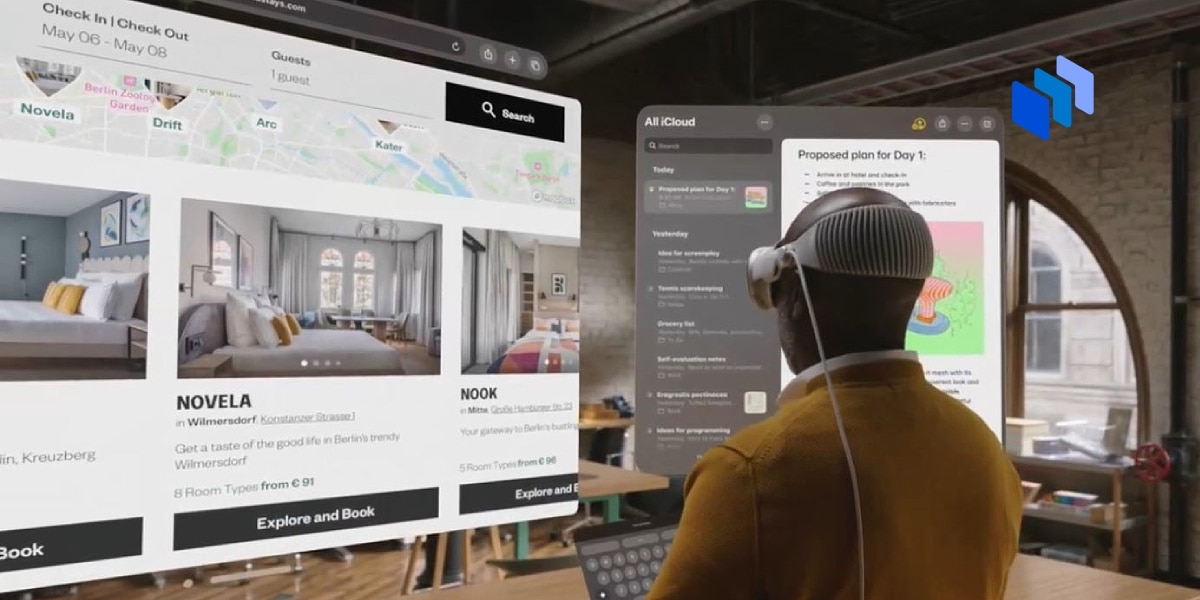Apple’s latest virtual-reality (VR) headset, the Vision Pro, has been making waves in the scientific community since its release just 10 days ago. Researchers and scientists are already exploring the potential research implications of this groundbreaking device. With its high precision and advanced features, the Vision Pro could revolutionize various fields, from surgery to human behavior studies.
Experts believe that the Vision Pro could be a watershed moment for VR adoption on a larger scale. Its exceptional precision and capabilities could greatly assist research tasks that were once limited to analog activities, such as surgeries. Moreover, the headset’s potential impact on human behavior opens up a plethora of research questions for scientists to explore.
Ken Pfeuffer, an expert in human-computer interaction at Aarhus University in Denmark, describes the Vision Pro as “insane.” Pfeuffer previously designed a similar feature called gaze pinch, which the Vision Pro now incorporates for virtual navigation. Pfeuffer is excited to study the uses of this feature once he gets his hands on the Vision Pro headset.
Since its US release on February 2nd, the Vision Pro has received accolades as the most advanced VR and augmented reality (AR) headset ever created. Apple prefers to call it a “spatial computer.” Tech giants like Microsoft and Meta have previously released VR and AR headsets, but experts argue that the Vision Pro’s unique combination of high-performance features, such as its realistic passthrough display and speedy projection, sets it apart.
The Vision Pro boasts eight outward-facing cameras that project the real world onto a 23-million-pixel interior screen with a 12-millisecond delay. Additionally, four interior cameras track the wearer’s eyes, enabling users to project screens and interact with virtual items simply by navigating their gaze, similar to using a computer mouse or clicking with pinching fingers.
Experts believe that the sleek performance and popularity of the Vision Pro could foreshadow a future where smaller wearable devices replace traditional handheld computers, such as mobile phones. Dima Damen, a computer vision expert at the University of Bristol in the UK, envisions a future where people can seamlessly interact with virtual overlays in the real world using wearable computers.
One of the standout features of the Vision Pro is the gaze-and-pinch virtual navigation technique. Pfeuffer believes that this feature has several applications beyond the headset itself. It could open doors for new ways of computer accessibility and information access for people with disabilities or those who are physically unable to use traditional input methods.
However, the Vision Pro’s current weight of 600 grams, along with the 350-gram battery that needs to be attached during use, can cause discomfort during prolonged usage. Researchers and experts anticipate that future versions of the headset will be smaller and more comfortable, eventually mimicking the form factor of a pair of glasses.
As spatial-computing headsets become more widespread, similar to smartphones, scientists speculate that human behavior could be significantly affected. Apple’s CEO, Tim Cook, believes that the Vision Pro marks the beginning of a new era where the digital and physical worlds blend together seamlessly, much like previous game-changing technologies such as mobile phones.
This type of technology holds the promise of giving society shortcuts to making things better, according to Damen. For example, it could revolutionize the way we share information and knowledge. Damen references a project where colleagues recorded their everyday activities using wearable cameras. People were able to learn new skills and improve their efficiency by studying the footage. This kind of immersive experience could be taken to the next level with the Vision Pro.
However, there are concerns about how constant exposure to virtual images may impact our actual 3D vision. Damen highlights that if projections can be manipulated through generative artificial intelligence, there’s a risk of perceiving a world that isn’t truly there. This raises questions about the potential alteration of our perception and the impact it could have on our brains and behavior.
As scientists delve into the research potential of the Apple Vision Pro, it becomes evident that this device has the power to reshape various fields and our society at large. Just like mobile phones did before, VR headsets like the Vision Pro could change the way we work, learn, and interact, and ultimately transform our understanding of the world around us.
